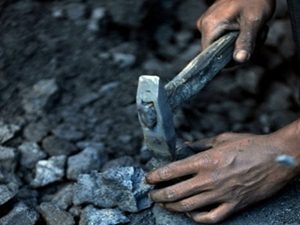
[miningmx.com] – ON balance, it would appear as if the write-down of Rio Tinto’s Mozambican coal assets for $3bn is net positive for Anglo American which in July paid a much lesser fee of $555m for a 58.9% stake in nearby Revuboe, a 1.4 billion coking coal prospect.
Rio Tinto’s new boss, Sam Walsh, is under pressure to either sell the asset in a general clean-out of the firm’s non-core assets, or sign a joint venture with a like-minded neighbour in Mozambique on a rail route. This is in lieu of barging coking coal from Rio Tinto’s Benga and Zambeze projects, a means of transportation the Mozambicans kicked in to touch in May last year.
James Harman, head of business development, iron ore and coal, at Anglo American told Miningmx in November that it didn’t make sense for Anglo to be building its own rail infrastructure, especially as Revuboe was only likely to be a 10 million tonnes/year (Mtpa) producer. A joint venture with Rio Tinto would make sense then.
It just falls to incoming CEO, Mark Cutifani, to decide whether Anglo presses ahead with Mozambique or puts it firmly on the back-burner. The write-down is bad news for Mozambique; it shows infrastructure development needs time and money and patience … in bucket loads. Just ask Transnet.
Still, there’s no lack of possible partners for Rio if it decides to persist with its Mozambican coking coal business for which it paid $4bn about two years ago.
Eurasian Natural Resources Company (ENRC) believes it can build a 40Mtpa rail line for its mine – a view that has drawn the scepticism of UK broker Whitman Howard whose analyst, Roger Bade, rated ENRC’s chances of getting a $5bn railway as “even less than zero’.
Bade is one of many analysts who interpret Rio Tinto’s write-down on its Mozambican assets as a hefty negative for the southern African country’s putative coking coal industry. Mozambique’s government has set a target of 100Mtpa by 2018, but this now seems distant and ambitious; a euphoric in-the-moment boast, especially when one considers the majors, except Brazilian firm (and Portuguese-speaking) Vale, are still only dealing in one to three million tonne/year production figures.
“This does raise a “red flag’ for all the other mines that became caught up in the scramble for Mozambique “coking coal’ assets,’ said Peter Davey, an analyst for SBG Securities in London. “The region should be seen as a five to 10-year development project,’ he added.
“If Rio is struggling to make its assets work, then the same would likely apply to others in the region,’ said Marc Elliott, an analyst for Investec Securities. “Probably good news for other coking coal sources around the world,’ he said. Probably good for coking coal in general.
It’s worth remembering the difficulties South Africa is experiencing launching itself as a producer of coking coal.
John Walllington, CEO of Coal of Africa (CoAL) said about 18 months ago that the Limpopo province could become a 10Mtpa coking coal exporter. It’s far from that right now with environmentalists clogging up the development of CoAL’s Vele mine, while other coal juniors are running out of cash.
Make no mistake, the development of southern Africa’s coking coal industry, or rather the headwinds it’s experiencing, show how difficult establishing new nodes of production have become generally speaking.











